| Ceratotrocha cornigera: frontal view of the head while whirling. Visible are the two conspicuous lobes. (1) |
| |
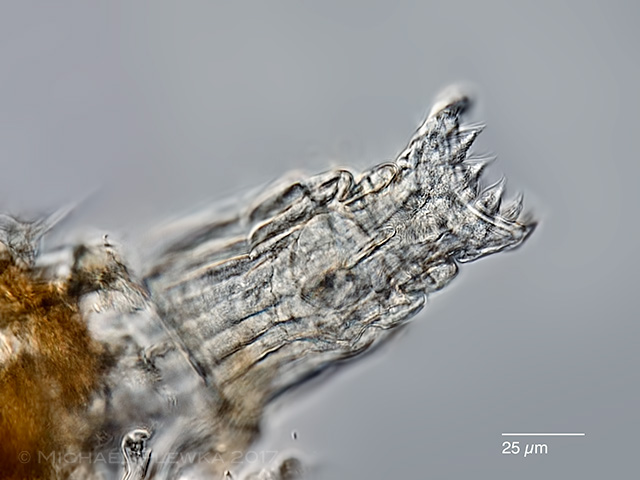 |
| Ceratotrocha cornigera: dorsal view of the head while whirling. (1) |
| |
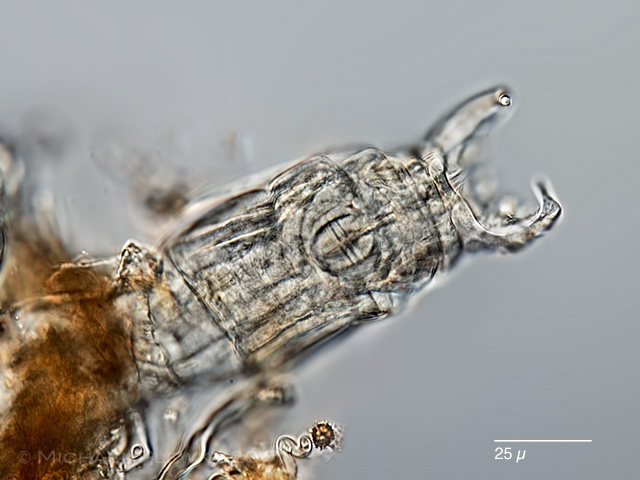 |
| Ceratotrocha cornigera: ventral view of the head while whirling. Visible are the two conspicuous lobes. (1) |
| |
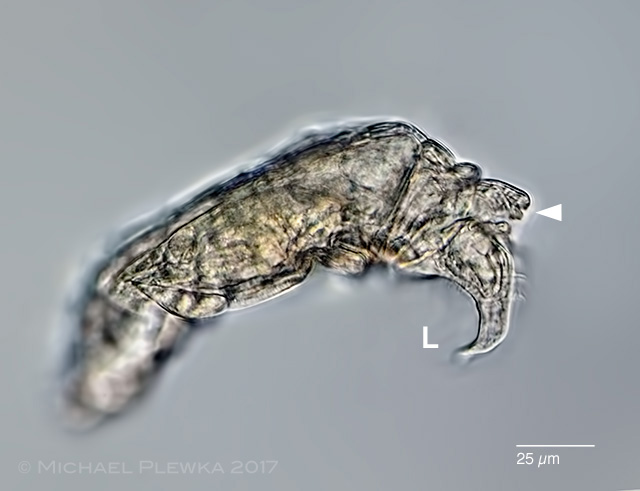 |
| Ceratotrocha cornigera: whirling, lateral view. The head/ corona is characterized by two lobes (the right one is visible in the image, labelled "L") that are orientated downwards while whirling.The arrowhead points to the rostrum. (1) |
| |
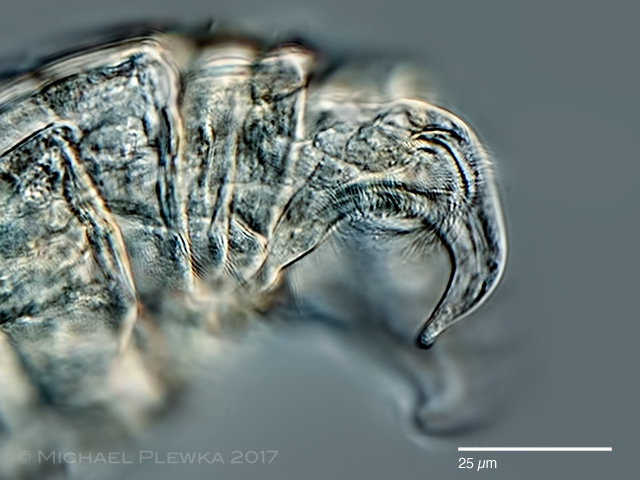 |
| Ceratotrocha cornigera: whirling, detail of the lobes. (1) |
| |
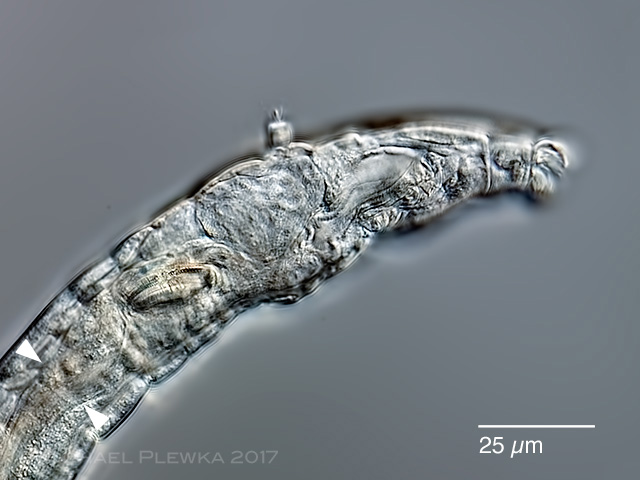 |
| Ceratotrocha cornigera: lateral view of the anterior part of the specimen while creeping. The dorsal antenna is short. In this optical longitudinal transect it becomes apparent that Ceratotrocha has a stomach with lumen and walls (arrowheads), so this genus does not belong to the Habrotrochidae. (1) |
| |
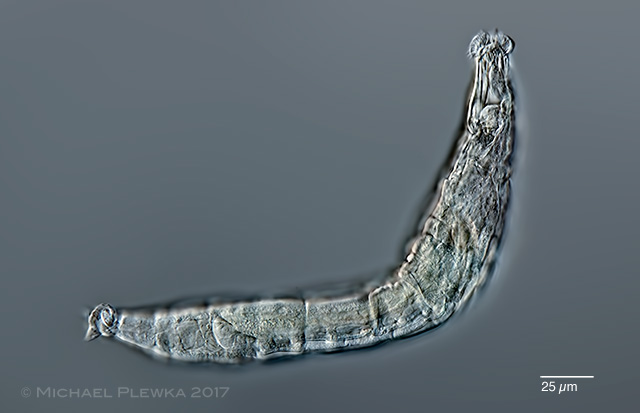 |
| Ceratotrocha cornigera: dorsoventral view of a creeping specimen. Heed the conspicuous rostrum lamella which is typical for this species. (1) |
|
|
Ceratotrocha cornigera; left image: creeping,specimen, focus plane is on the conspicuous dichotomous rostral lamella (arrowheads). The arrow points to the (closed) mouth opening. Right image: foot with spurs and toes. Ceratotrocha is one of the rare genera of Bdelloids with animals that have only two toes (arrowheads; the other one is Didymodactylos carnosus). (1) |
|
| |
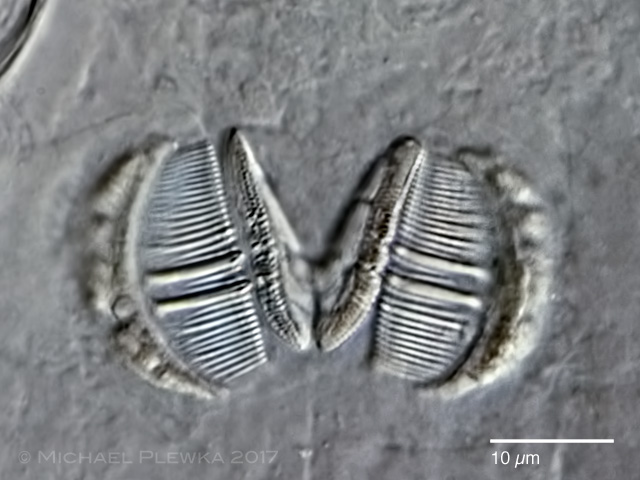 |
| Ceratotrocha cornigera; trophi with dental formula 2/2 (1) |
| |
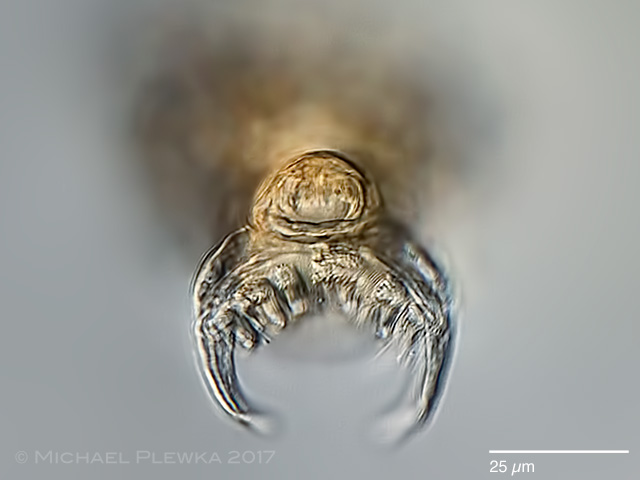 |
| Ceratotrocha cornigera; frontal view of another specimen. (2) |
| |
| Location: Hohenstein, Witten, Germany, |
| Habitat: soil / rotten wood |
| Date: 21.10.2017 (1); 26.12.2017 (2) |
| Sample provided by courtesy of Thorben Hülsewig, Witten |